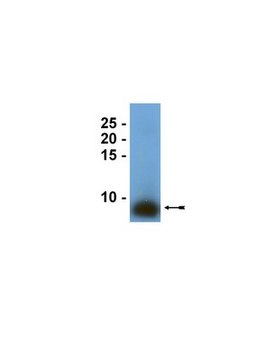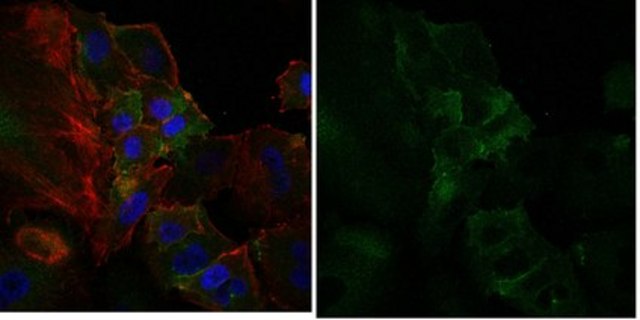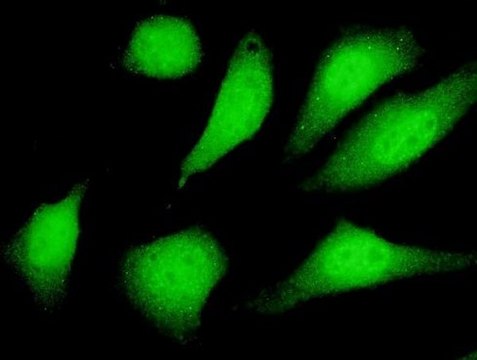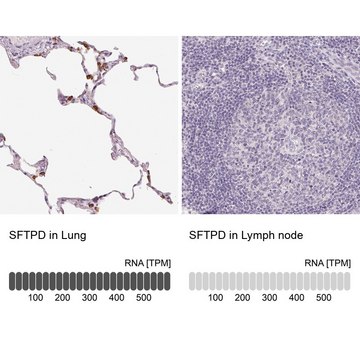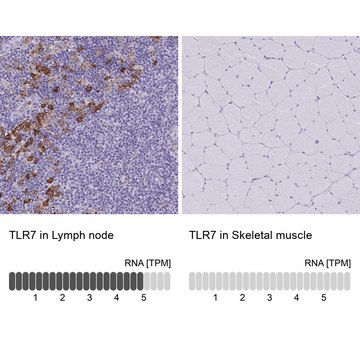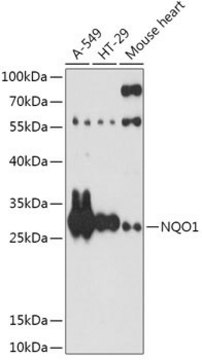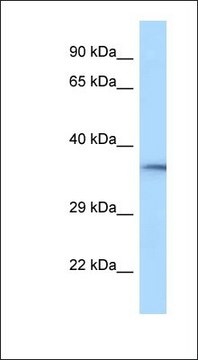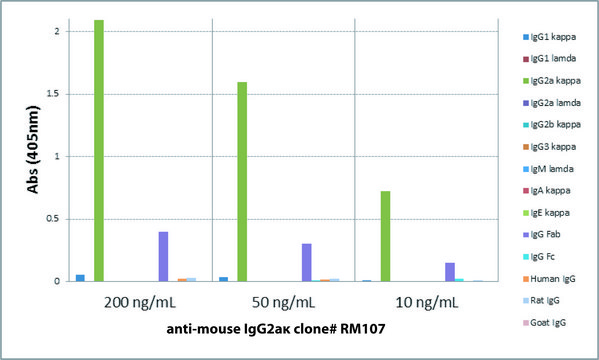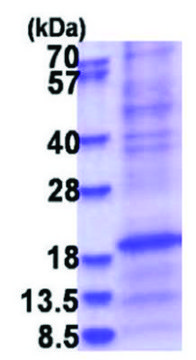推荐产品
生物来源
mouse
抗体形式
purified from hybridoma cell culture
抗体产品类型
primary antibodies
克隆
10F6E12, monoclonal
表单
buffered aqueous solution
分子量
~43 kDa
种属反应性
mouse, human
浓度
~1 mg/mL
技术
immunoblotting: 2-4 μg/mL using mouse lung extract
同位素/亚型
IgG1
UniProt登记号
运输
dry ice
储存温度
−20°C
靶向翻译后修饰
unmodified
基因信息
human ... SFTPD(6441)
mouse ... Sftpd(20390)
一般描述
Surfactant Protein D (SFTPD) belongs to the collectin family of multimeric glycoproteins and exists as oligomeric structure or a trimeric subunit. The human SFTPD corresponds to a molecular weight of 150kDa and the trimer is close to 620 kDa. Anti-Surfactant Protein D antibody, Mouse monoclonal, (mouse IgG1 isotype) is derived from the 10F6E12 hybridoma, produced by the fusion of mouse myeloma cells and splenocytes from mouse immunized with mouse recombinant SP-D.
Surfactant Protein D (SP-D) contains an N-terminal cysteine-rich domain, a collagenous domain, a neck region and a C-terminal carbohydrate recognition domain (CRD). The gene is located on human chromosome 14. SP-D is expressed in lungs and kidney.
特异性
Anti-Surfactant Protein D antibody, Mouse monoclonal recognizes SP-D from human and mouse origin.
免疫原
Mouse recombinant SP-D
应用
Anti-Surfactant Protein D antibody, Mouse monoclonal may be used in immunoblotting.
生化/生理作用
Surfactant Protein D (SFTPD) imparts pulmonary defense during fungal infection. It favors pulmonary inflammation. It recognizes the surface lipopolysaccharide (LPS) of pathogens and acts as first-line host defense molecule. It also recognizes the viral glycoprotein hemagglutinin (HA) present in viral surface. Polymorphism in the SFTPD gene may lead to decreased levels of the protein and high risk for chronic obstructive pulmonary disease (COPD).
Surfactant Protein D (SP-D) plays a critical role in the innate host defense and the modulation of inflammatory responses in infectious diseases. It aids the uptake and clearance of pathogens and apoptotic cells. SP-D maintains surfactant homeostasis. It reduces the surface tension at the air-liquid interface and blocks the lung from collapsing.
外形
Solution in 0.01 M phosphate buffered saline, pH 7.4, containing 15 mM sodium azide
储存及稳定性
For continuous use, store at 2–8 °C for up to one month. For extended storage, freeze in working aliquots. Repeated freezing and thawing is not recommended. If slight turbidity occurs upon prolonged storage, clarify the solution by centrifugation before use. Working dilution samples should be discarded if not used within 12 hours.
免责声明
Unless otherwise stated in our catalog, our products are intended for research use only and are not to be used for any other purpose, which includes but is not limited to, unauthorized commercial uses, in vitro diagnostic uses, ex vivo or in vivo therapeutic uses or any type of consumption or application to humans or animals.
未找到合适的产品?
试试我们的产品选型工具.
储存分类代码
10 - Combustible liquids
闪点(°F)
Not applicable
闪点(°C)
Not applicable
法规信息
常规特殊物品
Crystal structure of a complex of surfactant protein D (SP-D) and Haemophilus influenzae lipopolysaccharide reveals shielding of core structures in SP-D-resistant strains
Clark HW, et al.
Infection and Immunity, 84(5), 1585-1592 (2016)
Purification, characterization and cDNA cloning of human lung surfactant protein D
Lu J, et al.
The Biochemical Journal, 284(3), 795-802 (1992)
Molecular mechanisms of inhibition of influenza by surfactant protein D revealed by large-scale molecular dynamics simulation
Goh BC, et al.
Biochemistry, 52(47), 8527-8538 (2013)
Single nucleotide polymorphisms in collagenous lectins and other innate immune genes in pigs with common infectious diseases
Keirstead ND, et al.
Veterinary Immunology and Immunopathology, 142(1-2), 1-13 (2011)
Genetic loci associated with chronic obstructive pulmonary disease overlap with loci for lung function and pulmonary fibrosis
Hobbs BD, et al.
Nature Genetics, 49(3), 426-426 (2017)
我们的科学家团队拥有各种研究领域经验,包括生命科学、材料科学、化学合成、色谱、分析及许多其他领域.
联系技术服务部门